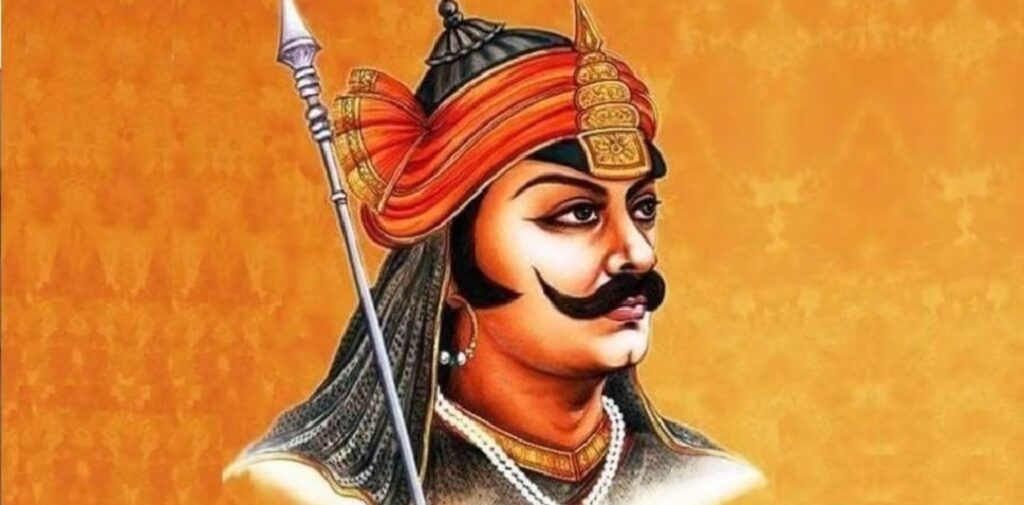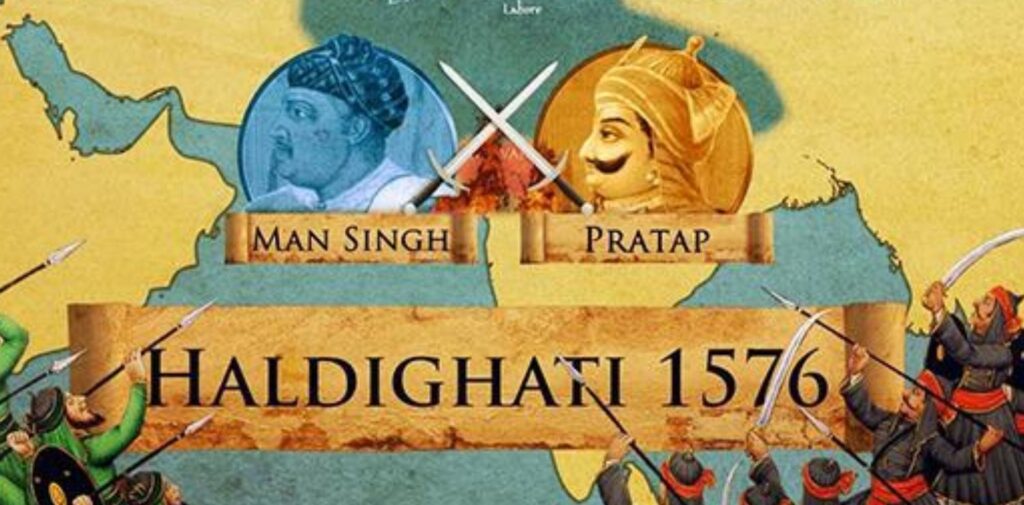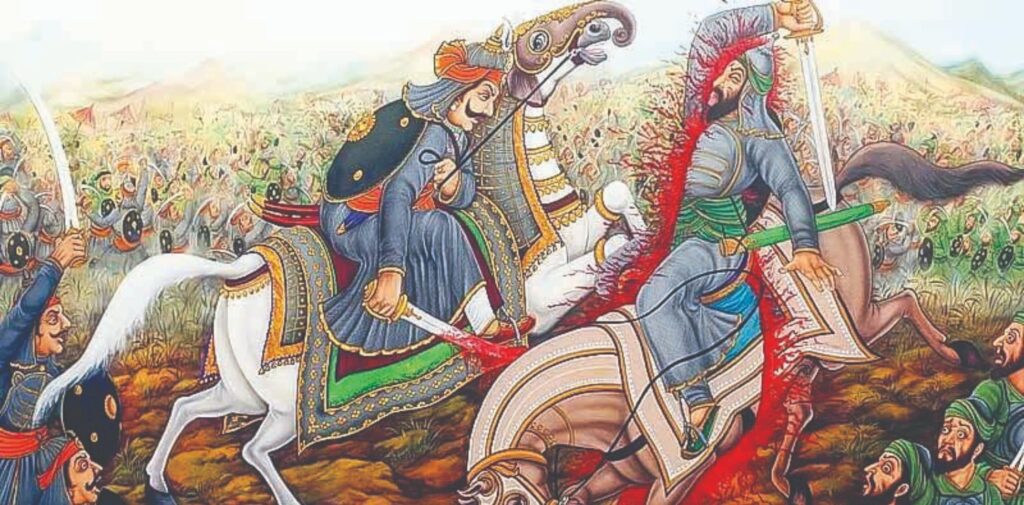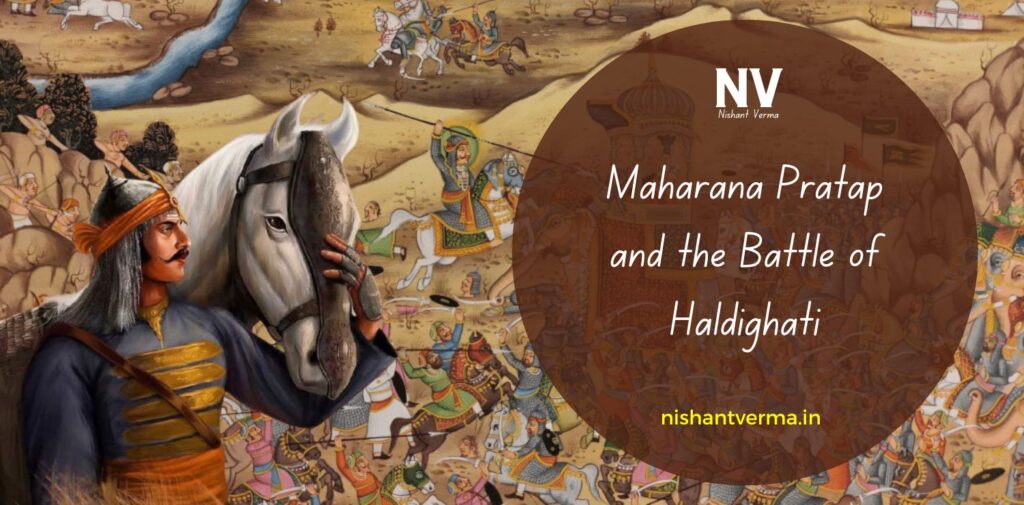Maharana Pratap, a legendary Rajput ruler, is remembered for his unwavering courage, leadership, and commitment to the independence of his kingdom, Mewar, during the 16th century. His famous battle against the Mughal Emperor Akbar at Haldighati in 1576 has made him a symbol of resistance and bravery in Indian history. Even though the battle is often remembered as a defeat for Maharana Pratap, it holds significant historical importance, and the events surrounding it remain a source of pride and inspiration for many.
Who Was Maharana Pratap?
Maharana Pratap was born on May 9, 1540, in the Rajput kingdom of Mewar, in present-day Rajasthan. He was the eldest son of Maharana Udai Singh II, the ruler of Mewar, and was groomed from a young age to lead the kingdom. Pratap succeeded his father as the ruler of Mewar at the age of 26 in 1572, after his father’s death. At the time, Mewar was under constant threat from the Mughal Empire, which was expanding rapidly across northern India under Emperor Akbar.
Pratap was not only a brave warrior but also a skilled administrator and a strong advocate for the welfare of his people. His life is a symbol of the Rajput spirit, valor, and determination to maintain their independence against foreign domination. His refusal to accept the Mughal overlordship, despite immense pressure, marked him as a prominent figure in the history of Indian resistance.

The Rise of Akbar and the Mughal Empire
To understand why Maharana Pratap fought against Akbar, it is important to consider the larger historical context. Akbar, who ascended the Mughal throne in 1556, was one of the most powerful and successful Mughal emperors. His empire expanded rapidly, and by the 1570s, Akbar had established control over much of northern and central India.
However, Mewar remained a stronghold of Rajput resistance. Maharana Udai Singh, Pratap’s father, had already resisted Akbar’s attempts to annex Mewar. After Udai Singh’s death, Pratap inherited a kingdom that was both strategically important and fiercely independent. Akbar, recognizing the importance of Mewar, sought to bring it under Mughal control. He sent emissaries to Pratap, urging him to accept Mughal suzerainty, but Pratap refused to bow to the Mughal emperor.
This refusal to submit to Mughal authority led to the famous confrontation between Maharana Pratap and Akbar’s forces—the Battle of Haldighati.
The Battle of Haldighati (1576)
The Battle of Haldighati was fought on June 18, 1576, between the forces of Maharana Pratap and the Mughal army led by Raja Man Singh of Amber, one of Akbar’s generals. The battle took place near the Haldighati pass in the Aravalli mountain range, in modern-day Rajasthan.
The Lead-Up to the Battle
Before the battle, Akbar had already made several attempts to subdue Maharana Pratap and annex Mewar. In 1568, Akbar had captured Chittorgarh, the capital of Mewar, and had forced its Rajput defenders to surrender. However,Pratap was not in the city at the time, continued to resist Mughal domination. He had already established a base in the wilderness of Mewar and had gathered a loyal army of Rajput warriors, along with soldiers from various other communities.
Their resistance to Akbar’s demands for submission grew stronger, and this led to the Mughal emperor’s decision to launch a full-scale military campaign to crush the Rajput king. The Mughal army, under Raja Man Singh, who was sent by Akbar, had far superior numbers and resources, while Maharana Pratap’s forces were relatively smaller and lacked the same resources.

The Battle
The battle itself was fiercely fought. According to historical accounts, the Mughals had a much larger army, including infantry, cavalry, and artillery. On the other hand, Pratap’s forces, though smaller in number, were highly motivated and determined to defend their homeland.
Maharana Pratap rode his famous horse, Chetak, into battle. Chetak is remembered for his incredible speed and strength, which played a crucial role in the battle. As the battle progressed, Pratap’s forces fought valiantly, and despite being outnumbered, they put up a tough fight. However, due to the Mughal forces’ numerical superiority and better organization, they were eventually able to gain the upper hand.
During the battle, Maharana Pratap’s horse, Chetak, was injured but continued to carry his rider across the battlefield. Chetak is said to have made a final, heroic leap over a stream to save Pratap’s life, after which he collapsed and died. This moment became one of the most iconic in Indian history, symbolizing the deep bond between the warrior and his steed.
Despite his courage and fierce resistance, Maharana Pratap’s forces were eventually forced to retreat. The Mughal army emerged victorious in the battle, but their refusal to surrender and his escape into the hills marked a symbolic victory for him.
Controversy and Debate Around the Battle
The Haldighati Battle is a subject of historical debate. Some historians argue that their resistance was ultimately a failure, as the Mughals maintained their hold over Mewar after the battle. Others believe that despite the tactical loss, Pratap’s determination to fight on and his refusal to accept Mughal domination turned the battle into a moral and symbolic victory. It is widely acknowledged that even after Haldighati, Pratap continued to wage a guerrilla war against the Mughal forces for many years, recapturing some parts of Mewar and maintaining his kingdom’s independence.

Legacy of Maharana Pratap
Maharana Pratap’s legacy is deeply ingrained in the cultural and historical consciousness of India, particularly in Rajasthan. He is remembered as a symbol of resistance against foreign oppression and as a king who chose the path of honor and independence, even in the face of overwhelming odds.
His refusal to accept Mughal rule has made him an enduring figure of pride, not just for Rajputs but for all Indians who value courage and independence. Many people in Rajasthan and across India celebrate his life through songs, poetry, and folk tales. The epic story of Maharana Pratap and his steed Chetak is taught to children and continues to inspire generations.
The fortresses and monuments associated with him, such as the Kumbhalgarh Fort and the memorial at Haldighati, stand as a testament to his resilience and determination. The Haldighati Battle is remembered as a defining moment in Indian history—a battle where Pratap’s spirit of defiance and courage shone through, even in defeat.
Conclusion
Maharana Pratap was not just a warrior but a symbol of the Rajput spirit, which placed honor, pride, and independence above all else. His resistance against Akbar, especially during the Battle of Haldighati, remains one of the most iconic chapters in Indian history. While the battle may have been a tactical defeat, his legacy continues to inspire countless people across India, making him a hero whose life and struggle against foreign rule is celebrated to this day.




